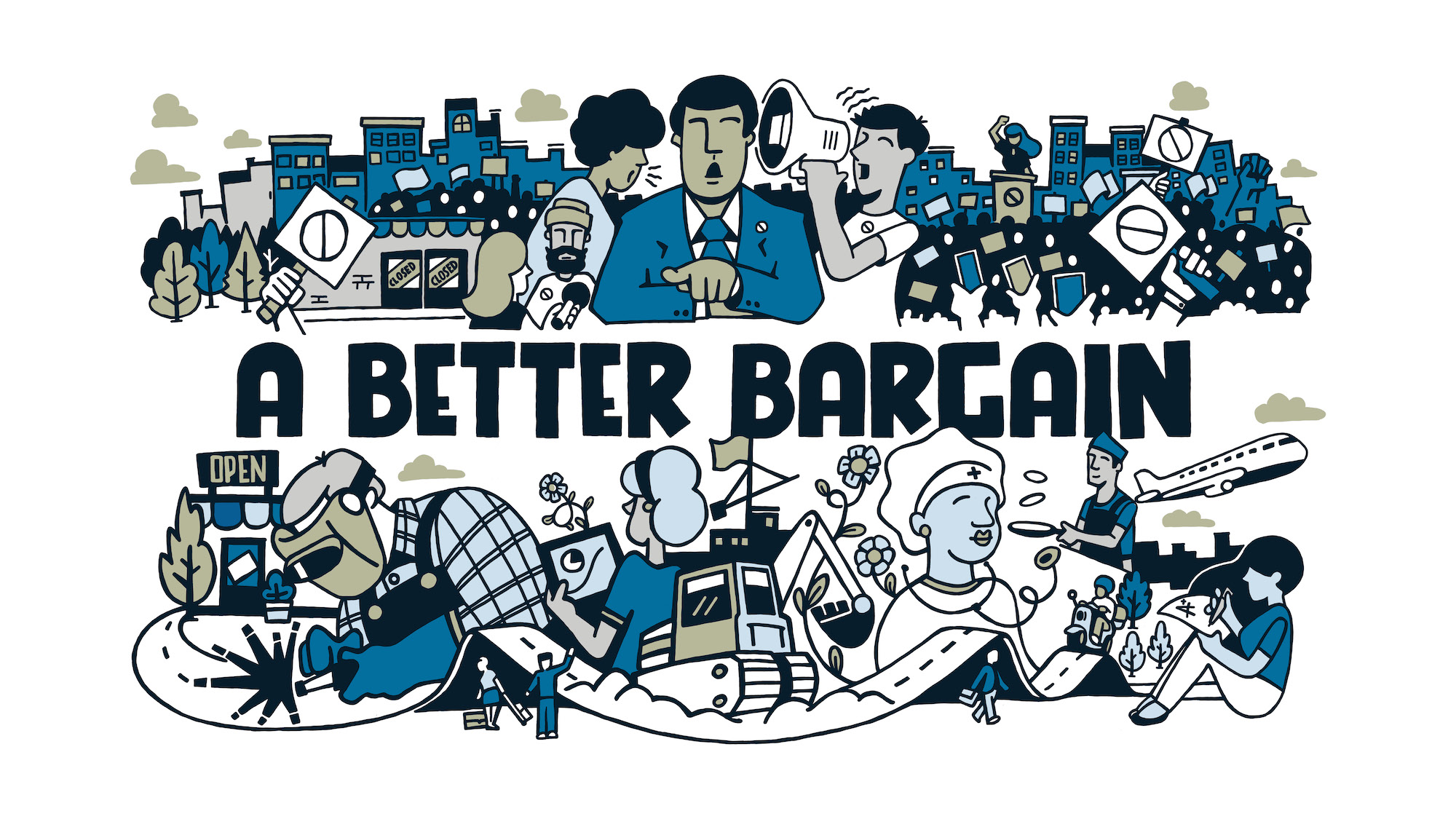
RECOMMENDED READING
The COVID-19 panic has drawn long-overdue attention to the economic and health and financial challenges facing many “essential workers” including nurses and health aides, nursing home aides, slaughterhouse workers, truckers, grocery store clerks and other retail workers, warehouse workers, and others upon whom the daily functioning of our continental society depends. Unfortunately the response of too many on the conventional right and left has been to fall back into ideological comfort zones—calling respectively for fewer regulations on business or higher wages and benefits for workers in general—rather than focusing on another reality that the pandemic has revealed: the appalling technological backwardness of many of these “essential” sectors.
As economic historians and students of innovation have long recognized, technological innovation comes in waves, each driven by a cluster of “general purpose” technologies, like the steam engine, the internal combustion engine, the electric battery, the silicon chip. But new technologies do not make economies more productive all at once; some sectors and some geographic regions lag behind. And absent government policy, working class bargaining power, or both, there is no guarantee that the gains from increased productivity, including lower prices for goods and services, will be shared with most of the population, instead of going mostly or exclusively to an economic oligarchy. Politics and public policy affect the rate and results of technological diffusion.
We see this in the contrasting histories of Northern and Southern agriculture in the U.S. between Reconstruction and the Civil Rights Revolution. In the rural Northeast and Midwest, a virtuous circle of technology-driven modernization and widely-shared prosperity was achieved: prosperous family farmers provided a home market and source of supplies for Northern factories, while county extension agents taught farmers new techniques and introduced new crops devised by the scientists at agricultural and mechanical colleges (A&Ms) endowed by the sale of federal land grants. Meanwhile, in the South, a low-wage, low-tech equilibrium persisted for generations, because workers were cheaper than machines, thanks to a variety of quasi-feudal unfree labor systems that succeeded slavery, including the short-lived Black Codes, tenant farming, the crop-lien system and the convict-lease system. The modernization of backward, exploitative Southern agriculture required a combination of the carrots provided by New Deal federal farm and infrastructure programs with the sticks of the Civil Rights Revolution.
Many of today’s “essential” industries like the premodern South are stuck in a low-wage, low-tech equilibrium. It does not have to be this way. Meat-packing in the U.S., for example, should be done by well-paid workers with generous paid leave and paid vacations who augment their productivity with the help of advanced robots, not by destitute immigrants and poor natives in rural counties chosen by firms for the poverty and desperation of their workers.
To be sure, by allowing fewer workers to produce the same or greater quantities of goods and services, mechanization and automation may lead to job losses in these sectors. But since the industrial revolution began, the specter of mass technological unemployment has never materialized, as distinct from transitional, sectoral unemployment (there aren’t a lot of mule-drivers nowadays).
Now that the idea of essential industries, not just essential workers, has been impressed by the pandemic on the public mind, the next step is to develop programs for using technology to upgrade essential industries that are low-wage, low-tech and low-productivity into high-tech, high-wage, high-productivity sectors. The details will vary among industries. But the model would be similar to the successful upgrading of U.S. agriculture a century ago, with government funding for public, private and academic R&D, technology extension programs to diffuse new technologies and business models, relaxation of antitrust law to allow small and medium firms to reap economies of scale by collaborating without merging, and payments to both firms and workers to ease transitions. To ensure that employers do not hoard all of the gains from government-backed modernization, there need to be innovative forms of tripartite business-labor-government collaboration to set wages and benefits—for example, federal or state wage boards in decentralized and dispersed sectors in which traditional enterprise bargaining cannot succeed.
It is not enough to have healthy essential workers. America must have healthy essential industries. The low road has led us to this crisis. To get out of it as a modern, middle-class nation, we need to take the high road.
Recommended Reading
A Labor Shortage Is a Great Problem to Have
Today’s jobs report from the Bureau of Labor Statistics shows the unemployment rate continuing to hold close to its lowest level in 70 years, despite a slight uptick last month. This might seem Read more…
A Better Bargain: Worker Solidarity and Mutual Support
Straightforward federal reforms could enable state and local governments to partner with new labor organizations in administer portable benefits and sector-wide training.
A Better Bargain: Worker Power in the Labor Market
This paper explains the advantages of broad-based bargaining, the key parameters that policymakers must establish, and the gradual process of experimentation by which it could gain prevalence in the American economy.











